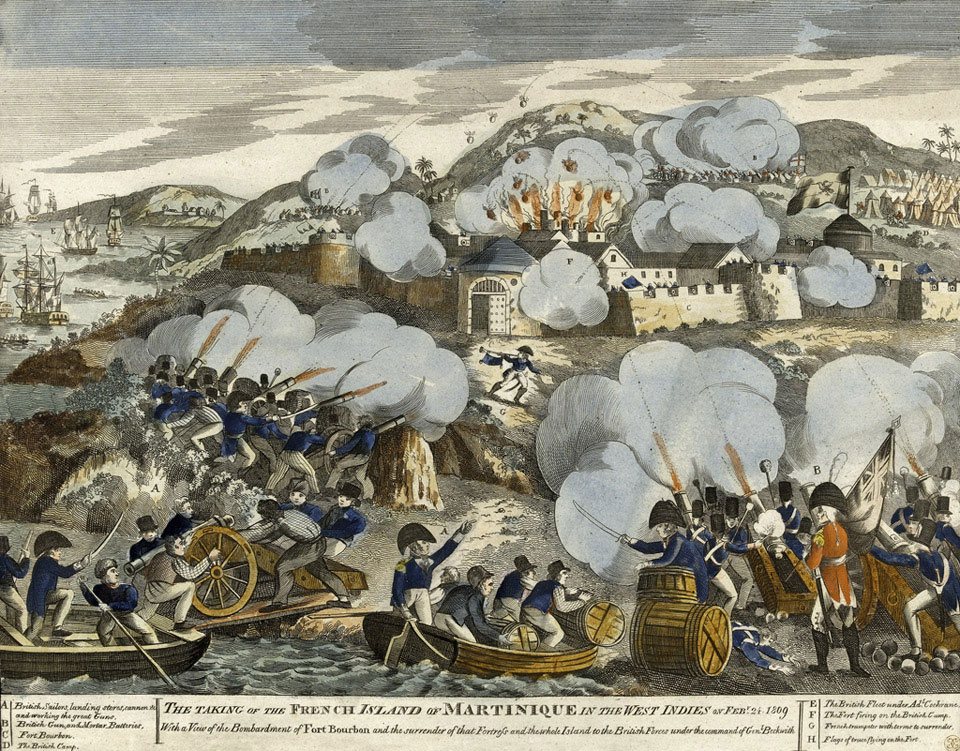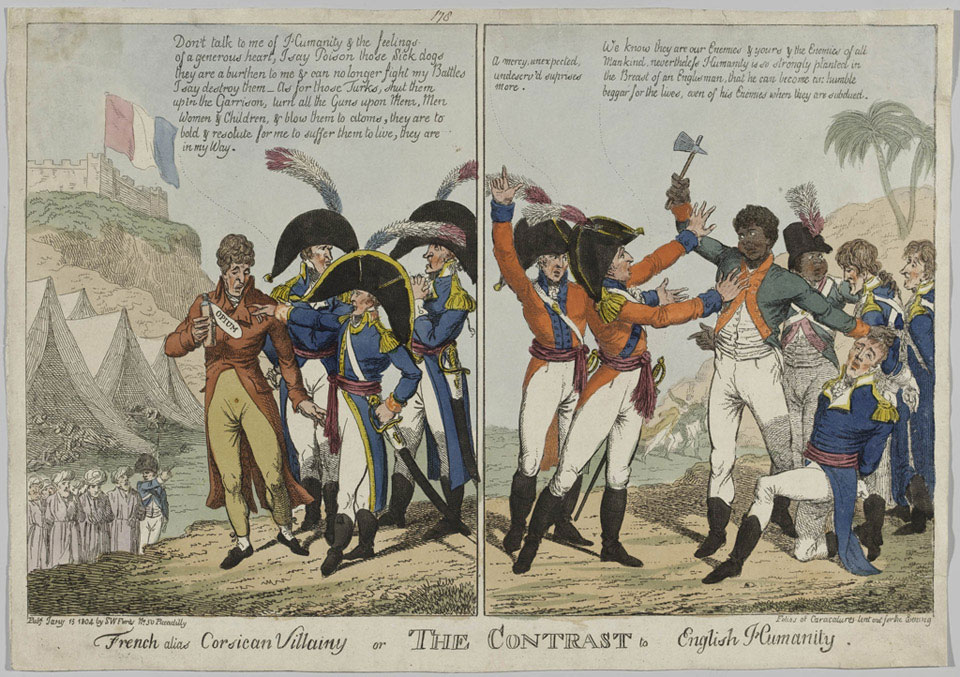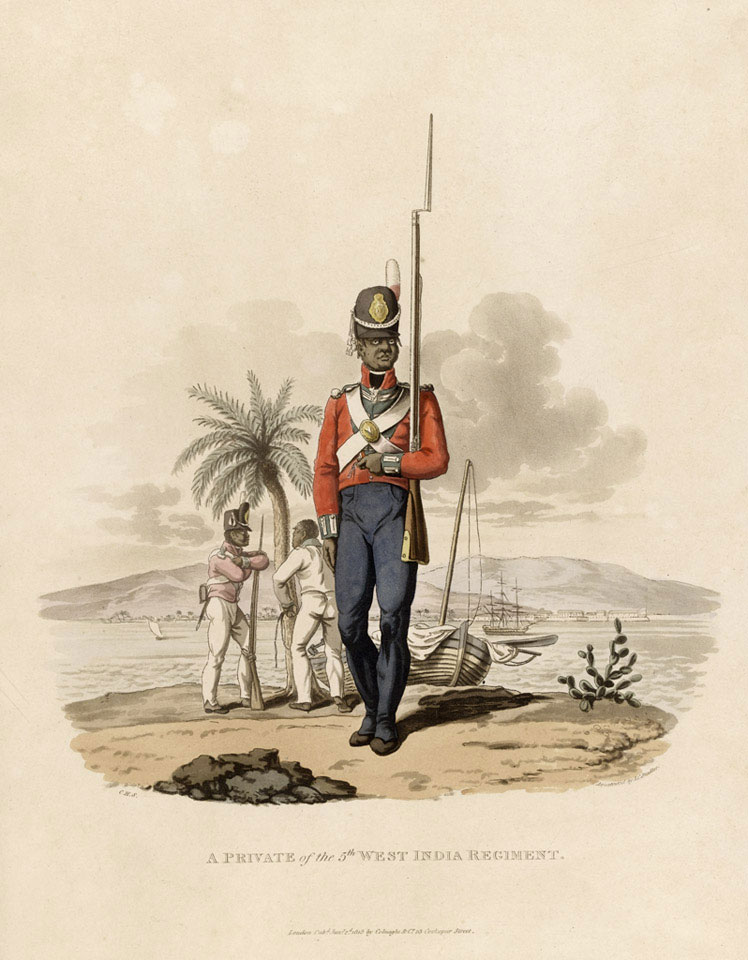Challenging racism through service?
Dr David Lambert, School of Comparative American Studies
Published October 2014
Formed in 1795, the British West India Regiments brought together former slaves and other men of African and African-Caribbean descent into the British infantry. The West Indian Regiments are part of Caribbean and, due to their involvement in the British Empire, world history.
Dr David Lambert and Dr Tim Lockley, along with two PhD students from the University of Warwick will be working with Dr Philip Hatfield from the British Library on a four-year research project to better understand the role of black men as soldiers, and later veterans, in the British Army from 1795 up until the outbreak of the First World War.
As part of the project, David Lambert will examine the textual and visual representation of the West India Regiment (WIR) in Britain and the British Empire to understand ideas about race, masculinity and the military. As a preview of the research, David looks at three illustrations representing the military service of men of African and African-Caribbean descent in the British West India Regiments.
“As soon as men of African and African-Caribbean descent joined the West India Regiments of the British army from the end of the eighteenth century, they were depicted in paintings, engravings and, later, photographs.
These joined a larger number of images of black people, including of enslaved people toiling on Caribbean plantations and Maroons who had run away from the estates to become rebels.
“Most of these images were made by white men and their depictions of people of African and African-Caribbean descent were often crude, caricatured and racist. So, did images of black soldiers serving in the British army challenge or perpetuate such stereotypes?
‘French alias Corsican Villainy or the Contrast to English Humanity’ (1803), National Army Museum
“This image was made during the Napoleonic Wars (1799-1815), a global conflict in which the West India Regiments were highly active. The image was intended to show the contrast between the British and their French enemies. While the diminutive figure of the French leader Napoleon Bonaparte can be seen to the left ordering the death of captives, British officers in the right panel try to stop a black man from killing his French prisoners. This man was a Haitian soldier from the former colony of Saint-Domingue. The colony had rebelled against the French and overthrown slavery. The image also captured the racist idea, held by many Europeans at the time, that men of African descent were prone to violence, which made some wary about the recruitment of black soldiers.”
A Private of the 5th West India Regiment’, aquatint by J. C. Stadler after Charles Hamilton Smith (1812), National Army Museum
“Fears that the arming of men of African and African-Caribbean descent was dangerous were particularly pronounced among Caribbean slaveholders and stemmed from racist ideas about their supposedly inherent brutality. For this reason, supporters of the West India Regiments worked hard to emphasise the discipline and bravery demonstrated by the soldiers in battle and to depict them in positive ways.
“This second illustration, of a private serving in the West India Regiment in Jamaica, is one such image. It shows a black man dressed as a regular British infantryman (as they were until the 1850s). In the background, a second West India Regiment soldier can be seen facing an enslaved man. This soldier’s commanding stance, contrasting with the less confident posture of the barefoot man, perhaps suggests that military service could be a means of self-advancement, a way out of slavery and even a ‘civilising’ influence more broadly on people of African descent.”

‘The Taking of the French Island of Martinique in the French West Indies on February 24th 1809’ (G. Thompson: 17 June 1809), National Army Museum
“This final image depicts the British invasion of the French Caribbean island of Martinique in 1809. The mission was a success and the capture of Martinique was widely celebrated in Britain and displayed in images like this. More than 10,000 soldiers were involved, including those from the 1st West India Regiment, which was awarded battle honours for its role. Yet, these black troops were not shown in this image. The absence of the 1st West India Regiment in this image serves as a reminder of how the contribution of men of African and African-Caribbean descent to the British army – and British Empire – has often been overlooked, downplayed and forgotten. One of the aims of our research is to reverse this absence.”
- Funded by the Arts & Humanities Research Council, the “Africa’s Sons Under Arms” (ASUA) research project will study the West India Regiments in order to explore the relationships between the arming of people of African descent and the changing nature of racial thought from the late 18th to early 20th centuries. It will examine the soldiers as objects of medical scrutiny during their time in the Caribbean; as figures of public interest who served within the wider British army; and as participants in organised sport watched by local and visiting spectators.
- More information of the project can be found here.
- The University of Warwick research team is drawn from its Department of History, its School of Comparative American Studies, its Yesu Persaud Centre for Caribbean Studies and its Global History and Culture Centre, along with the British Library team.
 Dr David Lambert is Reader of Caribbean History at the University of Warwick's School of Comparative American Studies. His research is concerned with slavery and empire in the eighteenth and nineteenth centuries, focusing on the Caribbean and its place in the wider (British Atlantic) world. Drawing on theories, methods and concepts from historical sociology, postcolonial studies and human geography, Dr Lambert seeks to foster interdisciplinary dialogue around notions of the ‘transnational’ and ‘transimperial’. "Africa's Sons Under Arms" is his current research project.
Dr David Lambert is Reader of Caribbean History at the University of Warwick's School of Comparative American Studies. His research is concerned with slavery and empire in the eighteenth and nineteenth centuries, focusing on the Caribbean and its place in the wider (British Atlantic) world. Drawing on theories, methods and concepts from historical sociology, postcolonial studies and human geography, Dr Lambert seeks to foster interdisciplinary dialogue around notions of the ‘transnational’ and ‘transimperial’. "Africa's Sons Under Arms" is his current research project.


